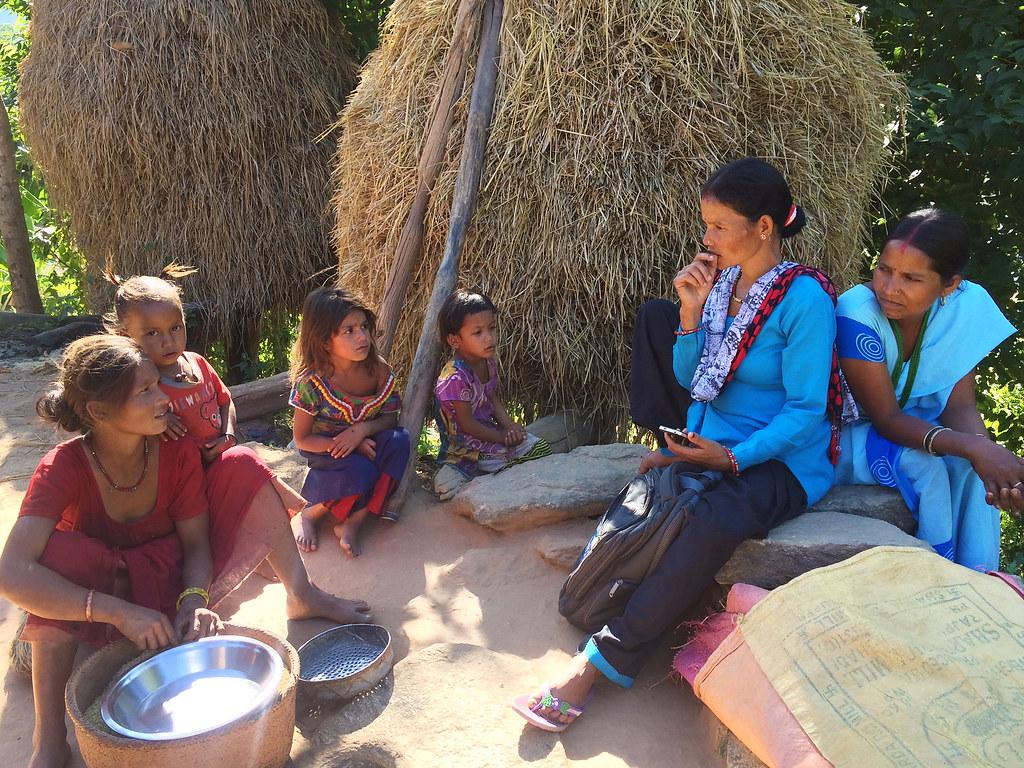The context of public health and nutrition in low and middle-income countries (LMIC) differs significantly from the social, economic, cultural and political environment in high-income countries where it has become the basic standard of life. Poor diets and undernutrition are major contributory risk factors for ill health and premature death; today’s world is facing the double burden of both under and over nutrition. While most of the high-income countries are suffering from over-nutrition related issues, undernutrition remains a significant public health threat in many LMICs, with almost half of all deaths in children under 5 years in LMICs attributable to poor nutrition.
Complexity of nutrition security
When thinking about good, secure access to nutrition (nutrition security), agriculture and food production is commonly known to be an important contributor (primary driver). However, good nutrition or nutritional status is shaped by many other factors outside of agri-food sector, such as the environment where we live, how we prepare our meal, access to clean water, access to the market and access to medical care. Evidence suggests that despite adequate access to food, nutritional status can be influenced by variability in health status and household environment such as access to clean drinking water, hygiene practice, sanitation (WASH), and clean cooking fuel. This is not a new observation, by recognising the complexity of the nature and causes of poor nutrition, nutrition sensitive approaches to improve the underlying and basic causes of undernutrition were presented in a conceptual framework produced by UNICEF back in 1990.
Progress so far
Desipite rapid improvement in economic and agricultural growth over the past few decades, child undernutrition rates remain considerably high in many LMICs. Nutrition promotion is therefore always on the top national and international development agendas such as United Nations (UN) developmental goals and have made some progress. For example, the United Nations Millennium Development Goals (MDGs), 2000-2015, helped to make some improvement against hunger with the proportion of undernourished people in the LMICs falling from 23.3% in 1990 to 12.9% in 2014. Nevertheless, malnutrition – and more specifically undernutrition remains a major contributory risk factor for ill health and premature death in many least developed countries including Nepal.
 |
Multisectoral, multi-stakeholder actions
Appreciating multi-causal nature of malnutrition, joint action from many actors and organisations in different sectors at different levels including public, private and third sector was highlighted in the United Nations Sustainable Development Goals SDG. Elimination of all forms of malnutrition is on the top priorities of the SDG, with a special focus on achievement by 2025 of targets in relation to growth stunting in children under 5 years (SDG 2.2). Crucial to achieving this are SDG 17.16 and 17.17 – multi-stakeholder partnerships – intended to strengthen the capacity of all countries, in particular, LMICs, to enhance global partnership to achieve common goals such as zero hunger, good health and wellbeing by sharing knowledge, expertise, technology and financial resources.
But just how many programmes are characterised by being multisectoral and multi-stakeholder? To answer this question we conducted a systematic review in 2016 exploring the Type and extent of trans-disciplinary co-operation to improve food security, health and household environment in low and middle income countries. The results identified that very few (11 out of 123 included studies) multi-stakeholder and multisector interventions have been conducted in LMICs in the field of nutrition and health. It also identified significant knowledge gaps, including a need to better understand linkages and the factors influencing the development of multi-stakeholder approaches to address the complexity of population health and nutrition related issues in LMICs.
To begin to understand these challenges in the Nepal context we recently used a qualitative research design to explore multi-stakeholders’ perceptions, knowledge and understanding of multisector approaches to improve nutrition and health. This highlighted promising signs in policy and commitment among local infrastructure and local stakeholders amid the increasing global movement towards nutrition sensitive multisector approaches to improve nutrition and health in the region. However, fragmentation amongst programme developers, poor budgeting, lack of research-based and practice-based evidence, limited transdisciplinary knowledge amongst sectoral stakeholders, short-term funding and lack of knowledge-sharing platforms were identified as barriers, often creating systematic problems for implementing multisector nutrition sensitive interventions in Nepal.
What now?
Recommendations from our multi-stakeholder analysis proposed key ways to mitigate barriers to effective multisector and multi-stakeholder interventions, including:
- improve knowledge of nutrition and its linkages across sectors, such as food security, safe water, clean cooking fuel, health and hygiene (major underlying causes of undernutrition in Nepal) amongst policy-makers and programme/project implementers including both governmental and non-governmental officers
- investment in collaborative practice-based research and evidence-based practice
- strengthened transdisciplinary collaboration between multi-stakeholders, such as researchers, implementers and beneficiaries, throughout the intervention development and implementation process
- establishment of local knowledge sharing platforms to share lessons learned and best practices would be beneficial to increase transdisciplinary knowledge among local stakeholders
For more information about this study please visit: Bridging barriers to advance multisector approaches to improve food security, nutrition and population health in Nepal: transdisciplinary perspectives



 By
By 


